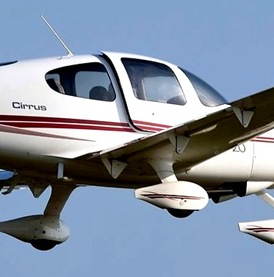General Aviation News has posted a summary of a 2009 accident report from the USA’s National Transportation Safety Board (NTSB) that is well worth reading as it offers a couple of lessons for all general aviation pilots. The incident near Gaithersburg, Maryland itself involved a Cirrus SR22 and pilot who had logged 327 hours that included 161 in a Cirrus plus had about seven hours of actual instrument time and an additional 63 hours of simulated instrument experience.
According to the accident report, the weather at the time of the accident included two miles of visibility and overcast clouds at about 400 feet. However, and as the Cirrus entered into clouds as about the 700 to 1,000 foot level, the accident report noted that:
The passenger door opened two to three inches, allowing rain, cold air, and increased noise to enter the cockpit. The pilot said he became spatially disoriented and that the airplane subsequently stalled and started to spin. The pilot activated the Cirrus Airplane Parachute System and the plane descended toward the ground. The left wing hit a parked vehicle and the airplane came to rest on a road about half mile west of the airport. The airplane’s left wing was fractured and the empennage was separated just forward of the horizontal stabilizer.
Luckily, the pilot was not hurt and he choose to quickly deploy the parachute system before it was too late.
Nevertheless, a subsequent examination of the aircraft as well as the passenger door locking mechanism did not reveal any mechanical problem or anomalies. Hence, the accident report concluded that the cause of the accident was the pilot’s spatial disorientation (after the passenger door opened during the flight) in instrument meteorological conditions but contributing to the accident was the pilot’s failure to properly secure the door latch before takeoff.
In other words and before you take off, be sure that you have properly inspected your aircraft and have secured all doors. Moreover and while a door opening during a flight may be a distracting and uncomfortable experience, don’t let it distract you from trying to fly and control the aircraft. Finally and if you loose control of the aircraft for any reason, be sure to quickly activate the parachute system as it may end up saving your life and the lives of your passengers.

I had this happen to me when a passenger didn't shut the door fully – they had been propping it open during the taxi on a hot day for cooling. It's no big deal in a Cirrus because the slip stream keeps it flush with the airframe. I just did a circuit, landed and shut the door again.
It is a very good lesson indeed. Securing and checking everything before take-off is an absolute. The lesson here also is don't panic and over-react.
FTFA